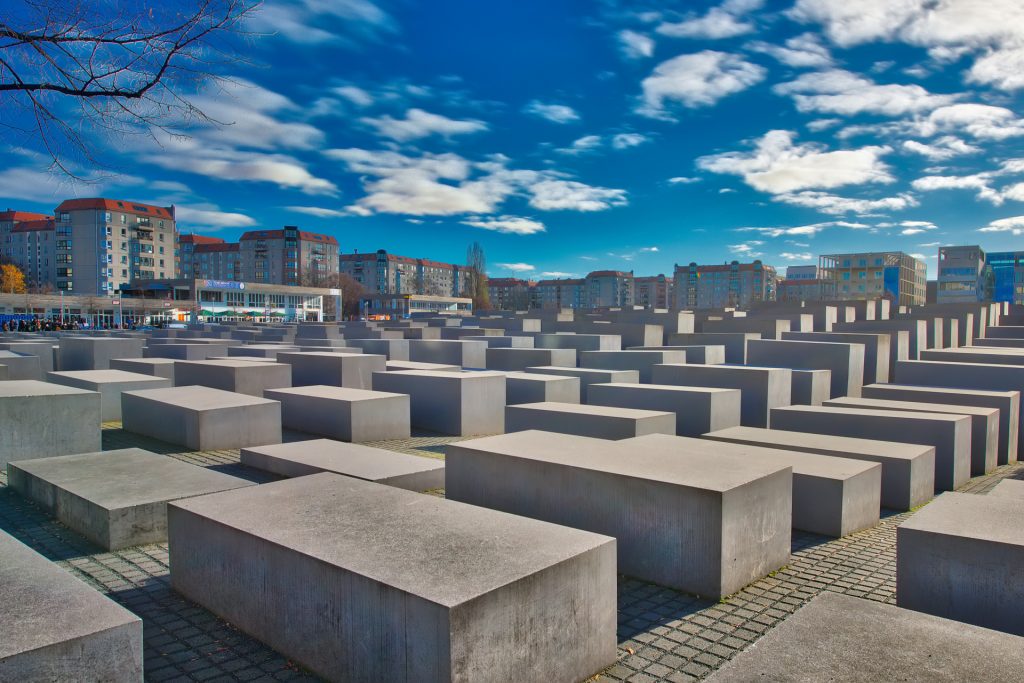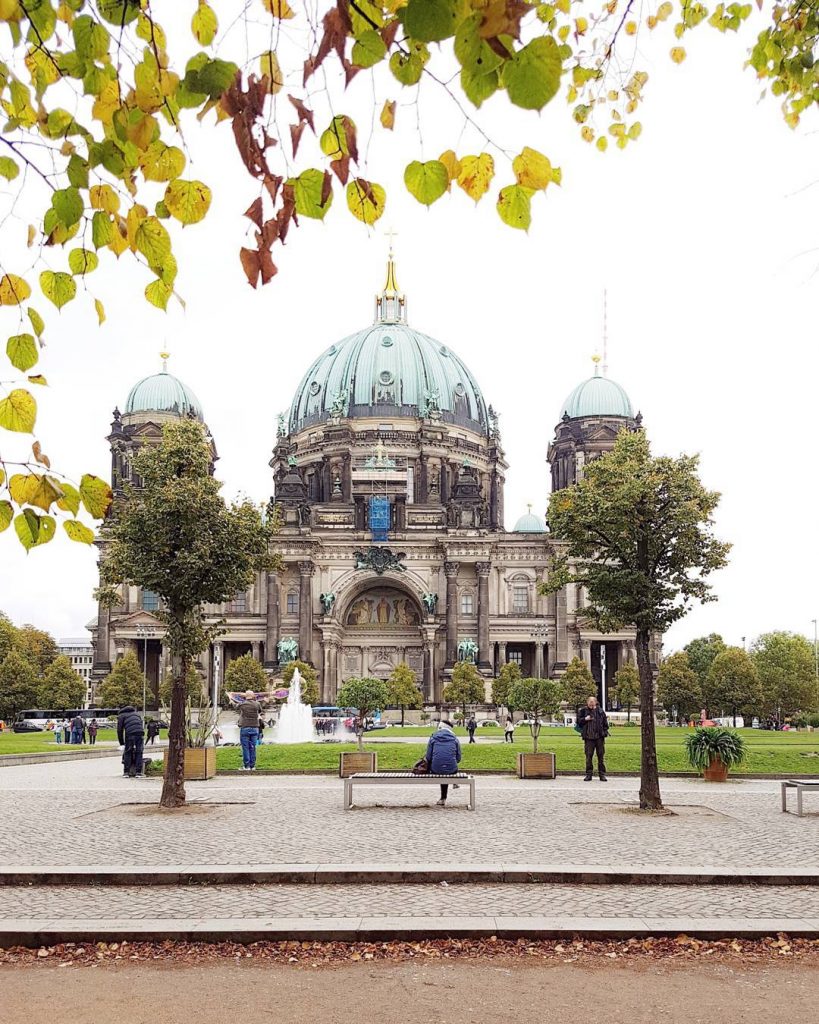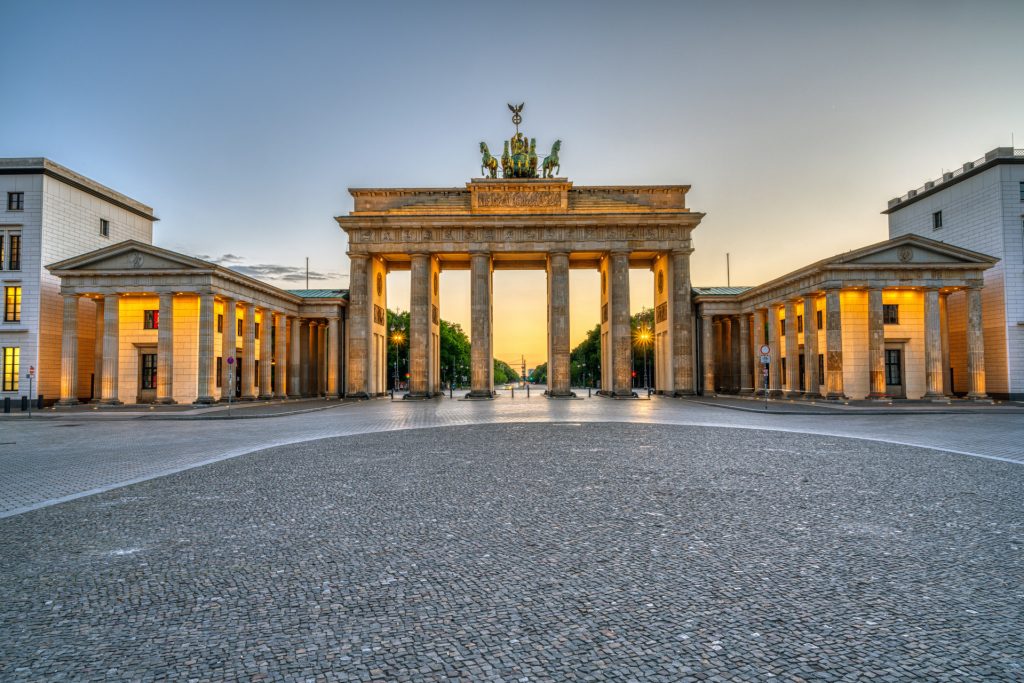Last Updated on October 20, 2022 by gregor
If you’re looking for a city with a rich history, exciting nightlife, and plenty of cultures, then Berlin is the perfect place for you! This 4-day itinerary will help you make the most of your time in the German capital. From exploring the city’s many museums to sampling the local cuisine, you’re sure to have a memorable trip.
Day 1: Arrive in Berlin and explore the city center
Start your trip by checking into your hotel and then venturing out to explore the city. Berlin is also full of history and culture, so spend the day walking around and seeing the sights. Be sure to visit the Brandenburg Gate, the Reichstag, and the Berlin Wall. You can also take a boat tour on the Spree River or visit one of the many museums in Berlin.
Day 2: Visit Potsdam
Just outside of Berlin is the city of Potsdam. This is a must-see for any history buff, as it is full of palaces and castles. Start your day at Sanssouci Palace, the summer home of Frederick the Great. Then, explore the grounds of the New Palace before heading to Cecilienhof Palace. End your day with a stroll through the beautiful parks and gardens.
Day 3: Day trip to Dresden
Dresden is a beautiful city located just a few hours from Berlin. Spend the day exploring the city center and marveling at the architecture. Be sure to visit the Frauenkirche, the Zwinger Palace, and the Semper Opera House. You can also take a boat ride on the Elbe River or go on a walking tour of the historic city center.
Day 4: Depart Berlin
Before heading to the airport, take some time to explore more of Berlin. Visit some of the other sights that you didn’t have time for earlier in the trip, such as the Pergamon Museum or the Berlin Cathedral. Or, do some last-minute shopping at one of the many markets or shopping malls.
How Many Days in Berlin?
There is no definitive answer to this question, as it depends on what you want to see and do while you are in Berlin. However, three to four days is generally considered enough time to get a good feel for the city. Of course, if you want to explore this view of Berlin in-depth, you could easily spend a week or more here.
How to spend four days in Berlin, things to do and see
Berlin is a great city and if you’re looking to explore all that Berlin has to offer, you’ll need at least four days. Berlin is a fascinating city with a rich history, and there is plenty to see and do. Here are some suggestions for how to spend your four days in Berlin:
Day 1:
Start your first day by exploring Berlin’s Museum Island, home to five world-renowned museums. Afterward, take a stroll through the beautiful Tiergarten park. In the evening, enjoy a traditional German meal and some local beer at one of the city’s many restaurants and pubs.
Day 2:
On your second day, visit some of Berlin’s most iconic landmarks, such as the Brandenburg Gate, the Reichstag building, and Checkpoint Charlie. Spend the afternoon wandering through the lively district of Kreuzberg, and in the evening, catch a show at the world-famous Berlin Philharmonic.
Day 3:
On day three, take a day trip to the picturesque town of Potsdam, just a short train ride from Berlin. Here you can visit the magnificent Sanssouci Palace and gardens, and explore the quaint streets of the old town. In the evening, return to Berlin for a delicious dinner and some live music at one of the city’s many bars and clubs.
Day 4:
On your final day, visit some of Berlin’s other attractions, such as the Olympic Stadium, the Berlin Wall Memorial, and the Jewish Museum. Or, if you’re looking for something more relaxed, take a leisurely stroll through one of Berlin’s many green spaces, such as Viktoriapark or the Tiergarten.
Whatever you decide to do, you’re sure to have a great time exploring all that Berlin has to offer!
4 Days in Berlin: Top Tips for Visiting Berlin
Whether you’re visiting west Berlin for the first time or the hundredth, there’s always something new to discover in this endlessly fascinating city. To help you make the most of your time, we’ve put together a list of our top tips for visiting Berlin.
1. Start at the Brandenburg Gate
No visit to Berlin is complete without a selfie in front of the Brandenburg Gate, one of the city’s most iconic landmarks. Dating back to the 18th century, the gate was once part of the Berlin Wall and is now a symbol of German unity.
2. Take a walk through history
Berlin is a city with a rich and complex history, and there’s no better way to learn about it than by taking a walking tour. From the atmospheric streets of the Jewish quarter to the sobering Memorial to the Murdered Jews of Europe, there are plenty of walking tours to choose from.
3. Visit a museum
Berlin is home to some of the world’s best museums, so it’s definitely worth spending a day or two exploring them. Highlights include the Pergamon Museum, the Berlin Wall Museum, and the Museum Island, a UNESCO World Heritage Site.
4. Go for a swim
Berlin may not be known for its beaches, but that doesn’t mean you can’t enjoy a refreshing dip in the water. There are several public swimming pools dotted around the city, or you could take a dip in one of the city’s lakes.
5. Sample the local cuisine
Berlin is famous for its currywurst, a delicious grilled sausage served with curry-flavored ketchup, but there’s much more to the city’s cuisine than that. Be sure to try some of the local specialties, such as Berliner doughnuts and flammkuchen (a kind of German pizza).
6. Explore the nightlife
Berlin is renowned for its nightlife, and there’s something to suit every taste. From raucous clubs to atmospheric bars, you’ll be spoilt for choice when it comes to choosing where to spend your evenings.
7. Shop till you drop
Berlin is a shopper’s paradise, with everything from high-end designer stores to quirky independent boutiques. Be sure to visit the famous Kurfürstendamm boulevard, or the trendy district of Friedrichshain.
8. Take in the views
Berlin is a beautiful city, and there are plenty of vantage points from which to appreciate its stunning architecture. For panoramic views, head to the TV Tower or the Reichstag building, or take a leisurely stroll through Tiergarten park.
We hope you enjoy your time in Berlin!
Discover Alexanderplatz
Alexanderplatz is a public square in Berlin, Germany. It is named after the Russian tsar Alexander I, who visited Berlin in 1805. The square was originally laid out in the 17th century, and it was a busy marketplace for many years. In the 19th century, it became a center of nightlife and entertainment, with many theaters and clubs. Today, it is a major transportation hub, with several U-Bahn and S-Bahn lines meeting there. It is also home to the TV Tower, one of Berlin’s most recognizable landmarks.
The Memorial for the Murdered Jews of Europe
The Memorial for the Murdered Jews of Europe, also known as the Holocaust Memorial, is a memorial in Berlin, Germany to the Jewish victims of the Holocaust. The memorial consists of a 19,000 square meter site covered with 2,711 concrete slabs or “stelae”, arranged in a grid pattern on a sloping field. The stelae are 2.38 meters high and 55 centimeters wide. They are arranged in a grid pattern on a sloping field. The memorial was designed by Peter Eisenman and unveiled in 2005.

The Berlin Wall Memorial
The Berlin Wall Memorial is a historical site located in the German capital of Berlin. The memorial is dedicated to the memory of those who died trying to escape from East Germany to West Germany during the Cold War. The memorial consists of a section of the Berlin Wall, which is now covered in graffiti, and a series of information panels that detail the history of the Berlin Wall and the people who died trying to escape from East Germany.
What To Do Berlin: Beyond the City Center
Looking to escape the hustle and bustle of Berlin’s city center? There’s plenty to see and do beyond the main tourist traps. Check out some of these lesser-known attractions the next time you’re in town.
Start your day with a stroll through Viktoriapark. This pretty park offers great views of the city and is a great place to people-watch. After working up an appetite, head to one of Berlin’s many excellent street food markets. Try the currywurst at Curry 36, or sample some international cuisine at Markthalle Neun.
In the afternoon, take a walk through the trendy district of Kreuzberg. Browse the independent shops, stop for a coffee or a beer, and check out the street art. If you’re feeling active, hire a bike and explore the city’s extensive cycle network. In the evening, catch a film at an independent cinema, or see a show at one of Berlin’s many live music venues.
Whatever you do, make sure you leave time to explore Berlin’s many different sides.
Charlottenburg Palace
The Charlottenburg Palace is a palace located in the Charlottenburg district of Berlin, Germany. It was built at the end of the 17th century and was the main residence of the Prussian royal family until the end of World War I. The palace complex includes the main palace, the Charlottenburg Palace Garden, and the New Wing. The palace is open to the public and is a popular tourist destination.
The Charlottenburg Palace was built at the end of the 17th century by Prince Elector Friedrich III for his wife, Sophie Charlotte. It was the main residence of the Prussian royal family until the end of World War I. The palace complex includes the main palace, the Charlottenburg Palace Garden, and the New Wing. The palace is open to the public and is a popular tourist destination.
The main palace is an early example of Baroque architecture. It is four stories high and has a central hall with a staircase leading to the upper floors. The palace also has a large ballroom, which is used for events and balls. The Charlottenburg Palace Garden is a Baroque garden with fountains, sculptures, and a maze. The New Wing was built in the 19th century and includes a museum with a collection of paintings by German artists from the 19th and 20th centuries.
Berliner Dom
The Berliner Dom is a church located in Berlin, Germany. The domed church was constructed between 1894 and 1905. The Berliner Dom is one of the most popular tourist attractions in Berlin, and is one of the city’s most recognizable landmarks. a pipe organ. The pipe organ has 7,000 pipes. The Berlin Cathedral is one of the largest churches in Germany.

Brandenburg Gate
The Brandenburg Gate is one of the most famous landmarks in all of Germany. It is located in the city of Berlin, and it is an iconic symbol of German history and culture. The gate was built in the 18th century, and it has since become one of the most popular tourist destinations in the city. The Brandenburg Gate is a beautiful piece of architecture, and it is definitely worth a visit if you are ever in Berlin.

Holocaust Memorial
The Holocaust Memorial is a somber reminder of the millions of Jews who lost their lives during the Nazi regime. The memorial is situated in the heart of Berlin, near the Brandenburg Gate. It is a simple, yet powerful, monument that stands as a testament to the atrocities of the Holocaust. The memorial is made up of 2,711 concrete slabs, each one representing a different victim of the Holocaust. The memorial is open to the public and is a popular tourist destination.
Unter den Linden
Unter den Linden is a street in Berlin, Germany. It is the city’s most famous boulevard and is a symbol of Berlin. The street runs from the Brandenburg Gate in the west to the Victory Column in the east. It is lined with trees and has a wide pedestrian path down the middle. Unter den Linden is a popular place for tourists to visit and is full of shops, restaurants, and hotels.
Potsdamer Platz
Potsdamer Platz is a public square and traffic intersection in the center of Berlin, Germany. It is named after the city of Potsdam, roughly 30 kilometers southwest of Berlin. Potsdamer Platz was the site of the world’s first long-distance electric railway, the Berlin–Potsdam Railway, which opened in 1838. Today, the square is surrounded by offices, hotels, and shopping centers.
Tiergarten Park
As the largest park in Berlin, the Tiergarten is unsurprisingly a very popular spot for locals and visitors alike. The park is especially beautiful in the spring and summer when the flowers are in bloom and the trees are green. There are plenty of benches and picnic tables throughout the park, making it the perfect place to relax and enjoy the day.
There are also a number of monuments and sculptures scattered throughout the Tiergarten, adding to its already impressive aesthetic. One of the most popular attractions in the park is the Berlin Zoo, which is home to over 14,000 animals. No matter what time of year you visit, the Tiergarten is sure to offer a memorable experience.
Prenzlauer Berg
Prenzlauer Berg is a neighborhood in Berlin, Germany. The neighborhood has a long history, dating back to the 13th century. It was originally a farming village on the outskirts of Berlin, but became part of the city in the 19th century. Today, Prenzlauer Berg is a trendy, hipster neighborhood with a lot of nightlife and restaurants. It is also home to a large number of families and young professionals.
Reichstag
The Reichstag is the parliament building of the Federal Republic of Germany in the city-state of Berlin. It is located on the Platz der Republik, to the south of the Reichstagsufer and north of the Brandenburg Gate. The Reichstag was originally built to house the Imperial Diet of the German Empire. Following the outbreak of World War II in Europe, the building fell into disuse; the parliament of the German Empire met in the Kroll Opera House from 1933 until its dissolution in 1945. In 1961, construction work began on the current building to replace the original structure, which had been severely damaged by Allied bombing during the war. The new Reichstag building was completed in 1999.
Conclusion
If you’re looking for a fun-filled trip to Europe, look no further than Berlin! This city has something for everyone, from history buffs to foodies to nightlife lovers. Check out our suggested 4-day itinerary to make the most of your time in Berlin!
Related Travel Guides about BERLIN
BERLIN QUICK TRAVEL GUIDE – TOP THINGS TO SEE AND DO IN 4 HOURS, UPDATE 2022
TOP 15 BERLIN INSTAGRAMERS YOU SHOULD BE FOLLOWING FOR INSPIRATION
